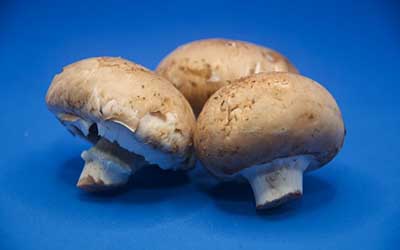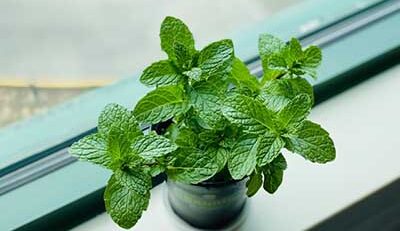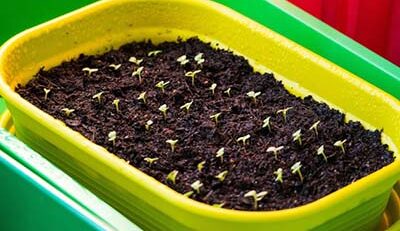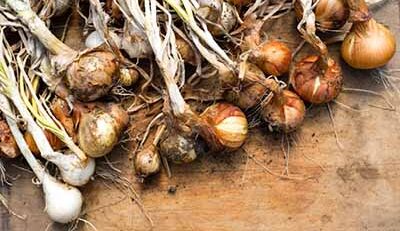How to Grow Portobello Mushrooms: A Comprehensive Guide
Introduction
Portobello mushrooms, with their rich flavor and meaty texture, are a favorite ingredient in various cuisines. The good news is, you don’t have to rely on supermarkets to get your supply. Learning how to grow portobello mushrooms at home is a rewarding experience, and with the right guidance, you can cultivate them successfully. This guide will walk you through everything you need to know about how to grow portobello mushrooms, from start to finish.
Understanding Portobello Mushrooms
Portobello mushrooms (Agaricus bisporus) are mature versions of the common button mushroom. They have a large, brown cap and an intense flavor that makes them a versatile ingredient. These mushrooms are not only delicious but also packed with nutrients like fiber, protein, vitamins B and D, and essential minerals like selenium and copper.
Growing portobello mushrooms at home can be a fun and fruitful project. The process requires a bit of patience and some specific conditions, but with the right approach, you can cultivate a bountiful harvest.
The Life Cycle of Portobello Mushrooms
To understand how to grow portobello mushrooms effectively, it’s helpful to have a basic understanding of their life cycle. It consists of several stages:
- Spore germination: Spores from mature mushrooms land in a suitable growing medium, where they begin to germinate and form mycelium.
- Mycelium development: The mycelium, a network of thread-like structures, spreads throughout the growing medium, breaking down nutrients that the mushrooms need to grow.
- Pinning: Small, pin-like structures called primordia start to form, which eventually develop into mature mushrooms.
- Fruiting: This is when the mushrooms grow to their full size, ready for harvesting.
Knowing these stages helps you monitor the growth of your mushrooms and ensure you’re providing the right conditions at each stage.
What You Need to Grow Portobello Mushrooms
Before starting the growing process, make sure you have the following materials:
- Mushroom spawn: You can purchase portobello mushroom spawn from garden centers, nurseries, or online suppliers.
- Growing medium: Portobello mushrooms thrive in compost or manure-based growing mediums.
- Growing tray or container: A tray or container at least 8 inches deep is ideal for holding the growing medium.
- Peat moss: Used as a casing layer to cover the growing medium.
- Newspaper or plastic sheet: To maintain humidity and create a dark environment.
- Spray bottle: For misting and maintaining moisture.
- Thermometer and hygrometer: To monitor temperature and humidity levels accurately.
Step-by-Step Guide to Growing Portobello Mushrooms
1. Preparing the Growing Medium
The first step is preparing a suitable growing medium. Portobello mushrooms prefer nutrient-rich environments, and compost or manure-based mediums are ideal.
- Choose a Container: Select a growing tray or container that’s about 8-10 inches deep. Ensure it has drainage holes if you are using compost or manure that might retain excess moisture.
- Fill the Container: Fill the container with a mixture of compost or manure. Ensure the growing medium is moist but not soaking wet.
Pro Tip: If you don’t want to prepare your own compost, you can purchase ready-made mushroom compost from gardening stores.
2. Inoculating with Mushroom Spawn
Once the growing medium is ready, it’s time to introduce the mushroom spawn.
- Sprinkle the Spawn: Evenly sprinkle the portobello mushroom spawn on the surface of the compost.
- Mix the Spawn: Use a small gardening tool to gently mix the spawn into the top layer (about 2 inches deep) of the compost. This helps the mycelium (the fungal network that mushrooms grow from) to spread more efficiently.
3. Creating the Ideal Growing Environment
Portobello mushrooms need a specific environment to grow successfully. Here’s how you can create the perfect conditions:
- Temperature: The ideal temperature for growing portobello mushrooms is between 65-75°F (18-24°C). You can use a thermometer to monitor the temperature of the growing area.
- Humidity: Mushrooms thrive in high humidity (around 85-90%). Mist the growing medium with water regularly using a spray bottle. You can also cover the container with newspaper or a plastic sheet to retain moisture.
- Darkness: Portobello mushrooms grow best in low-light conditions. Place the container in a dark area, such as a basement or garage, or cover it with a black plastic sheet to block out light.
4. Casing the Mycelium
After about 2-3 weeks, you should notice white, thread-like mycelium spreading across the surface of the compost. Once you see this, it’s time to add a casing layer.
- Prepare Peat Moss: Mix peat moss with water until it’s damp but not waterlogged.
- Apply the Casing Layer: Spread a 1-inch layer of peat moss over the surface of the mycelium. This helps retain moisture and provides a protective cover for the mushrooms to develop.
5. Maintaining and Monitoring Growth
At this stage, you need to maintain optimal conditions for your mushrooms to grow:
- Keep the temperature between 55-65°F (13-18°C) for the fruiting stage.
- Maintain humidity by misting the casing layer daily.
- Ensure there’s minimal light exposure.
Note: Maintaining a stable environment is crucial. Sudden temperature drops or fluctuations in humidity can slow down or even halt the growth of your mushrooms.
6. Harvesting Your Portobello Mushrooms
Once the caps of the mushrooms are fully developed and open, your portobellos are ready to harvest.
- Use a sharp knife to cut the mushrooms at the base.
- Handle them gently to avoid bruising.
Portobello mushrooms will continue to grow in cycles, so check the growing medium regularly, as you might be able to harvest more mushrooms in the following weeks.
Expanding Your Mushroom Cultivation
If your first attempt at growing portobello mushrooms is successful, you might consider expanding your cultivation efforts:
- Outdoor Cultivation: Portobello mushrooms can also be grown outdoors in garden beds, especially in regions with mild, humid climates. Just ensure they are planted in a shaded area to protect them from direct sunlight.
- Indoor Cultivation Kits: For beginners, mushroom growing kits are an excellent way to practice without needing to prepare the growing medium from scratch. These kits come with pre-inoculated compost, making the process more straightforward.
Troubleshooting Common Problems
- Slow Growth or No Growth
- Cause: Insufficient moisture, incorrect temperature, or low-quality spawn.
- Solution: Check the moisture level, adjust the temperature, and ensure you’re using fresh, high-quality spawn.
- Mushrooms Turning Yellow or Brown
- Cause: Too much light exposure or contamination.
- Solution: Reduce light exposure and ensure a clean growing environment.
- Mold Growth on the Medium
- Cause: Excessive moisture or contamination.
- Solution: Remove the affected areas and maintain proper ventilation.
Health Benefits of Portobello Mushrooms
- Rich in Antioxidants: Portobello mushrooms contain antioxidants that help fight free radicals, reducing oxidative stress in the body.
- Low in Calories: They are a low-calorie food, making them an excellent addition to a weight-loss diet.
- Boosts Immunity: Their high selenium content supports immune function, helping protect against infections.
Conclusion
Growing portobello mushrooms is a rewarding and enjoyable project that allows you to enjoy fresh, delicious mushrooms at home. By following this guide, you can create the ideal environment for your mushrooms to thrive and ensure a successful harvest. Whether you’re a gardening enthusiast or a mushroom lover, cultivating portobello mushrooms is a fulfilling way to enhance your culinary adventures.
By taking control of the growing process, you ensure that your mushrooms are organic, chemical-free, and full of flavor. So why wait? Start your portobello mushroom-growing journey today and enjoy the satisfaction of harvesting your mushrooms straight from your own home!











Leave a Reply